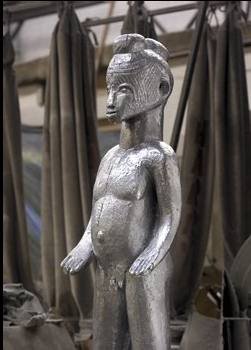Bertrand Lavier
dal 11/4/2008 al 16/5/2008
Segnalato da
11/4/2008
Bertrand Lavier
Yvon Lambert, Paris
His witty artworks disturb our routine ways of perceiving and conceiving art, and reassess our visual and intellectual education and impel the viewer to see how mundane objects can be transformed into authentic artworks. His painted objects, his repainted mirrors, and tableaux d'ameublements instigate a reconsideration of the relationship between art and reality.

Yvon Lambert, Paris is pleased to announce its third personal exhibition of Bertrand Lavier.
Born in France in 1949, Bertrand Lavier has acquired a prominent place in the contemporary
art world. Influenced by Duchamps and the Nouveaux Réalistes, his witty artworks disturb
our routine ways of perceiving and conceiving art. They reassess our visual and intellectual
education and impel the viewer to see how mundane objects can be transformed into
authentic artworks. The artist reveals all the stages of this transitivity between life and art, he
shows how an institution, a place of exhibition, a pedestal, the act of painting a surface are
different factors in the same process. His painted objects, his repainted mirrors, and tableaux
d’ameublements ("fitment paintings") instigate a reconsideration of the relationship between
art and reality.
The exhibition proposed by the gallery attests new orientations in Bertrand Lavier’s
"esthétique du détournement"1 . Ibo, 2008, questions the status of the original and the
process of cultural exchanges. The benchmarks for this piece are traditional votive statuettes
from Niger; they are objects of everyday use in Africa and became considered as artworks
only through occidental art history. The artist made a series of 5 original statues of chrome
bronze after the African model. He plays with codes specific to occidental sculpture by
introducing an outside element into it. The seriality of this production, the change in material
statuette into a work of art. There is some ambiguity in this newly acquired status though.
The artist mingles identities and categories to give the viewer an unsettling yet pleasant
experience.
Bertrand Lavier will also show at the gallery a wall of ceramic, a material he started working
with at the Ceramic Biennal in Italy, 2003. Inspired by South African Ndebele wall painting,
this piece reworks their abstract patterns, colours and figures. Originally intended to be
painted on exterior walls of South African houses, the piece ended up in a contemporary art
context. Again, it changes its own status along with the status of the exhibition space.
Nothing remains uninfluenced by the artist grand detournement
The last piece presented at the gallery, is a canvas on which two shades of Ferrari red have
been applied. This piece recalls Rouge géranium par Duco et Ripolinî, 1974: both show two
regular surfaces of paint in two very close shades. Here, the viewer is brought to realise
there is variable shades of the mythical Ferrari red. The artist shows how symbols are
subject to change, how their permanence is only a fantasy. The piece assesses in a witty
way the instability of what seems to remain unchanged and the paradoxical ambiguity of
what seems to be original. By placing next to each other two reds confounding both the eye
and the word to express it, the artist demonstrates there is no perfect conformity between
arts, reality and language.
1 : Jean Hubert Martin
vernissage april 12, 2008
Yvon Lambert
108 rue vieille du Temple - Paris
Free admission



